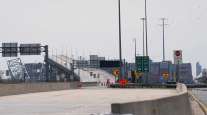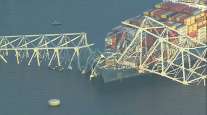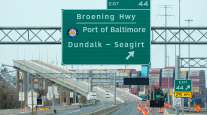Associated Press
With Just 90 Seconds of Warning, Countless Lives Were Saved
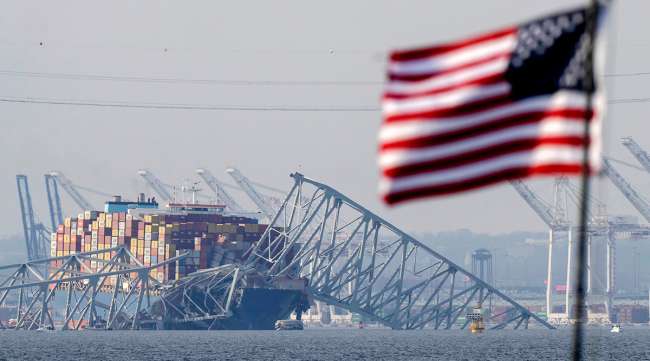
[Stay on top of transportation news: Get TTNews in your inbox.]
BALTIMORE — It was the middle of the night when a dispatcher’s warning crackled over the radio: A massive cargo ship had lost its steering capabilities and was heading toward the Francis Scott Key Bridge.
Within about 90 seconds, police officers who happened to be nearby responded that they managed to stop vehicle traffic over the Baltimore bridge in both directions.
One parked sideways across the lanes and planned to drive onto the bridge to alert a construction crew once another officer arrived. But he did not get the chance. Powerless and laden with huge containers, the vessel smashed into a support pillar.
“The whole bridge just fell down,” a frantic officer said. “Start, start whoever, everybody ... the whole bridge just collapsed.”
“These people are heroes,” Maryland Gov. Wes Moore said. “They saved lives last night.”
When the containership Dali slammed into the pillar around 1:30 a.m. March 26, the bridge crumpled into the Patapsco River. The loss of the major transportation link is expected to snarl commuter traffic and disrupt a vital shipping port.
At least eight people went into the water. Two were rescued, but the other six — part of a construction crew that had been filling potholes on the bridge — were missing and presumed dead. A search for their bodies was underway March 27.
The twisted metal and other debris in the water complicated the search, according to a Homeland Security memo described to the Associated Press by a law enforcement official. The official was not authorized to discuss details of the document or the investigation and spoke to AP on condition of anonymity.
Moore said divers in the water faced dangerous conditions.
Prayers for those affected in #bridgecollapse 🙏❤️#bridge #baltimorebridge #BachelorNation #bachelor #USA#BaltimoreBridgeCollapse pic.twitter.com/EwXF6S3G0c — Fighter_4_Humanity (@Fighter_4_Human) March 27, 2024
Scripps News/Baltimore interviews Mike Singer, the man whose camera captured the bridge collapse.
“They are down there in darkness where they can literally see about a foot in front of them. They are trying to navigate mangled metal, and they’re also in a place it is now presumed that people have lost their lives,” he said.
Among the missing were people from Guatemala, Honduras and Mexico, according to diplomats from those countries. The Honduran man was identified as Maynor Yassir Suazo Sandoval.
Three Mexicans were on the bridge. One was rescued, and two are missing, said Mexico President Andrés Manuel López Obrador.
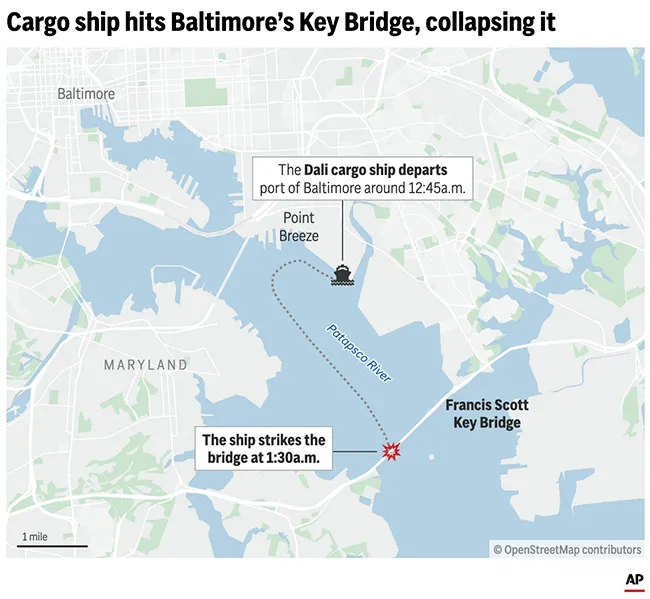
Federal and state officials have said the crash appeared to be an accident. Investigators planned to collect evidence on the ship, including electronics and paperwork, said National Transportation Safety Board Chair Jennifer Homendy.
The U.S. Coast Guard already boarded the vessel and downloaded the voyage data recorder and sent it to the National Transportation Safety Board, which is building a timeline of what led to the crash, Homendy said. A preliminary report could be done in two to four weeks, she said.
Capt. Michael Burns Jr. of the Maritime Center for Responsible Energy said bringing a ship into or out of ports in restricted waters with limited room to maneuver is “one of the most technically challenging and demanding things that we do.”
There are “few things that are scarier than a loss of power in restricted waters,” he said. And when a ship loses propulsion and steering, “then it’s really at the mercy of the wind and the current.”
Video showed the ship moving at what Maryland’s governor said was about 9 mph toward the 1.6-mile bridge. Traffic was still moving across the span, and some vehicles appeared to escape with only seconds to spare. The crash caused the span to break and fall into the water within seconds.
Police said there is no evidence anyone went into the water other than the workers, though they had not discounted the possibility.
An executive at the company that employed the crew, Brawner Builders, said they were working in the middle of the bridge when it fell. “This was so completely unforeseen,” said Jeffrey Pritzker, the company’s executive vice president.
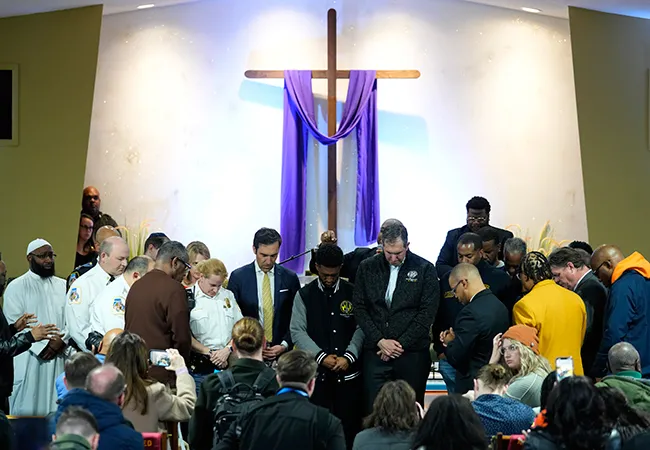
Baltimore Mayor Brandon Scott (center) and others pray for victims during a vigil at Mount Olive Baptist Church in Dundalk, Md., near the scene where a containership collided with a support on the Francis Scott Key Bridge March 26. (Matt Rourke/Associated Press)
Jesus Campos, who has worked on the bridge for Brawner Builders and knows members of the crew, said he was told they were on a break and some were sitting in their trucks.
“I know that a month ago, I was there, and I know what it feels like when the trailers pass,” Campos said. “Imagine knowing that it is falling. It is so hard. One would not know what to do.”
Ako Walker, a Catholic priest at Sacred Heart of Jesus, said outside a vigil that he spent time with the families of the missing workers as they waited for news of their loved ones.
“You can see the pain etched on their faces,” Walker said.
Witte reported from Dundalk, Md. Associated Press journalists around the world contributed to this report, including Colleen Long, Sarah Brumfield, Rebecca Santana, Jake Offenhartz, Joshua Goodman, Ben Finley, Claudia Lauer, Juliet Linderman, David McHugh, John Seewer, Michael Kunzelman, Mike Catalini and Sarah Rankin.
Want more news? Listen to today's daily briefing below or go here for more info:


